Urbino - Sights and History
Sights
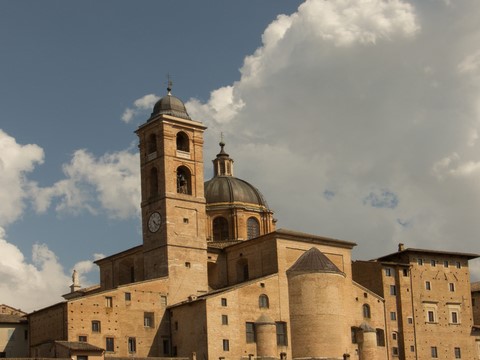
Duomo Santa Maria Assunta, Piazza Duca Federico
(Cathedral): The cathedral of Urbino, a magnificent example of Gothic architecture with an impressive façade and beautiful frescoes inside.
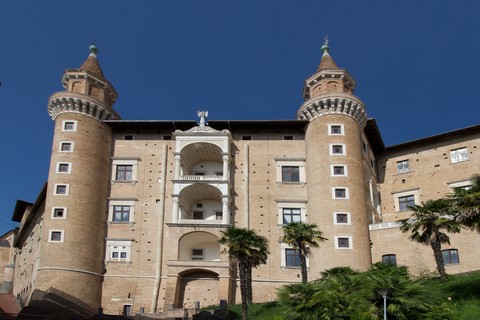
Palazzo Ducale
(Ducal Palace): An impressive Renaissance building that served as the residence of the Dukes of Urbino. It now houses the National Museum of the Marches.
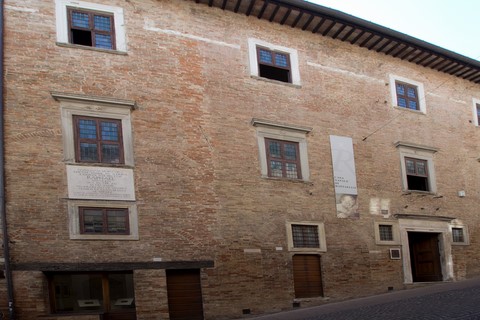
Casa Natale di Raffaello
(Raphael's Birthplace): The birthplace of the famous Renaissance artist Raphael. It is a museum that exhibits Raphael's works and memorabilia.
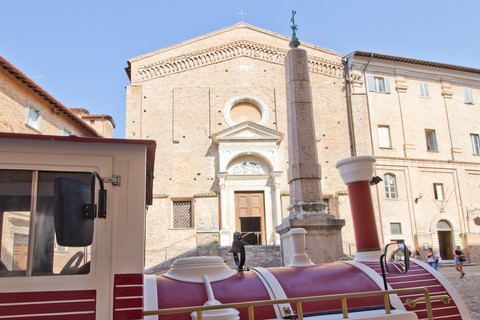
San Domenico
A Dominican church with an elegant Gothic portal and an impressive collection of artworks.

La Tomba di Raffaello
Replica of Raphael's tomb in the Pantheon of Rome from the year 2020. Location: former Church of the Santissima Annunziata / Convent of the Barefoot Carmelites, today Academy of Arts

Oratorio di San Giovanni Battista
A small oratory dedicated to St John the Baptist. It contains valuable frescoes from the 15th century and is an example of Renaissance art in Urbino.
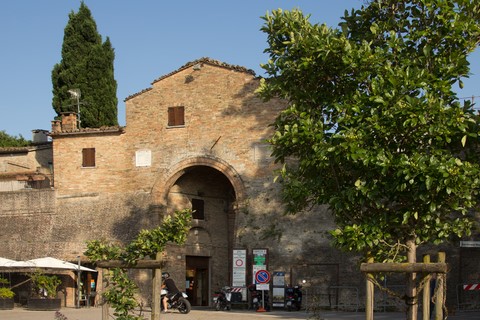
Porta San Lucia
Northern main gate of the city wall of Urbino. It was remodeled in the 19th century to allow access for carriages.
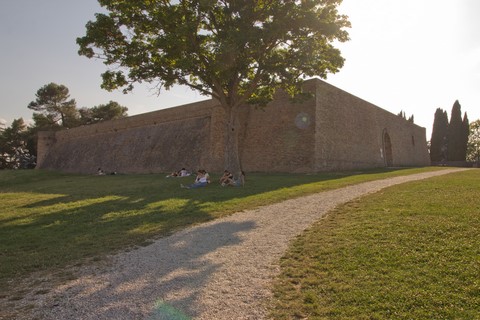
Fortress Albornoz
The fortifications on a hill above the city were built in the 14th century, probably commissioned by Cardinal Alvarez Carillo de Albornoz. In the 16th century, the architect Comandino modified the structure of the fortress by adding more towers, among other things. The park surrounding the fortress was opened to the public in 1975. From here you have a beautiful view of the city.
- San Francesco: A Franciscan church with an impressive mix of Gothic and Romanesque architecture.
- Santa Chiara: A monastic complex consisting of a church, a convent and a cloister. It displays beautiful Renaissance architecture and houses the tomb of Federico da Montefeltro.
- San Bernardino: A church dedicated to Saint Bernardino of Siena. It is known for its harmonious Renaissance architecture and magnificent interior.
- San Giuseppe: A Baroque-style church dedicated to Saint Joseph. It stands out for its richly decorated façade and sumptuous interior.
- San Girgio: A church dedicated to St. George. It is known for its beautiful Romanesque façade and its impressive collection of works of art.
History
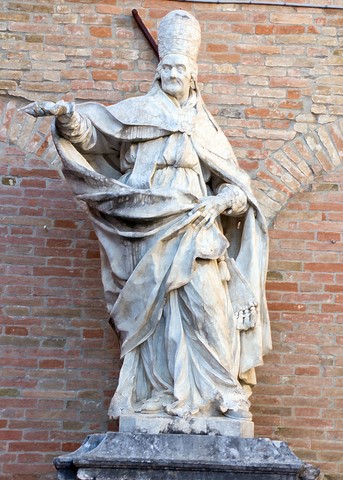
Before the ancient Romans arrived, the area was already inhabited by various populations such as the Etruscans, Umbrians and the Galli Senoni (4th century BC). The area was probably inhabited even earlier, but information about this is sparse and fragmentary. The sources from the Roman period, on the other hand, are more extensive, also thanks to authors such as Varro and Pliny the Elder.
The history of Roman Urbino began precisely when the Gauls were subdued by Roman soldiers, who quickly conquered the entire territory of the Marches. The name of the city, Urbino, seems to date back to the time when it was called Urvinum Metaurense or Mataurense by the Romans, derived from the Latin name of the river that flows through it (the Metauro). It was where the small Roman nucleus formed on the hill that resembled the plough handle (called "Uvinum" or "Urvum") that the city got its name. It became the town of Urvinum on the Metauro to distinguish it from Urvinum Hortense, another Roman settlement nearby.
Urbino's strategic position between the sea and the Apennines was of great importance from both a commercial and military point of view. The city was located on the Via Consolare, which connected Rome with Rimini via Fano, and was an important cultural centre. In the course of history, Urbino became part of the Papal States and was closely linked to the Montefeltro family. Federico da Montefeltro, one of the city's most important rulers, led Urbino to cultural prosperity and supported artists such as Raphael. The famous Ducal Palace of Urbino was built under his rule. Urbino became a centre of culture and was home to artists, writers and scientists. The city was considered the "ideal city" and had a great influence on Renaissance culture.